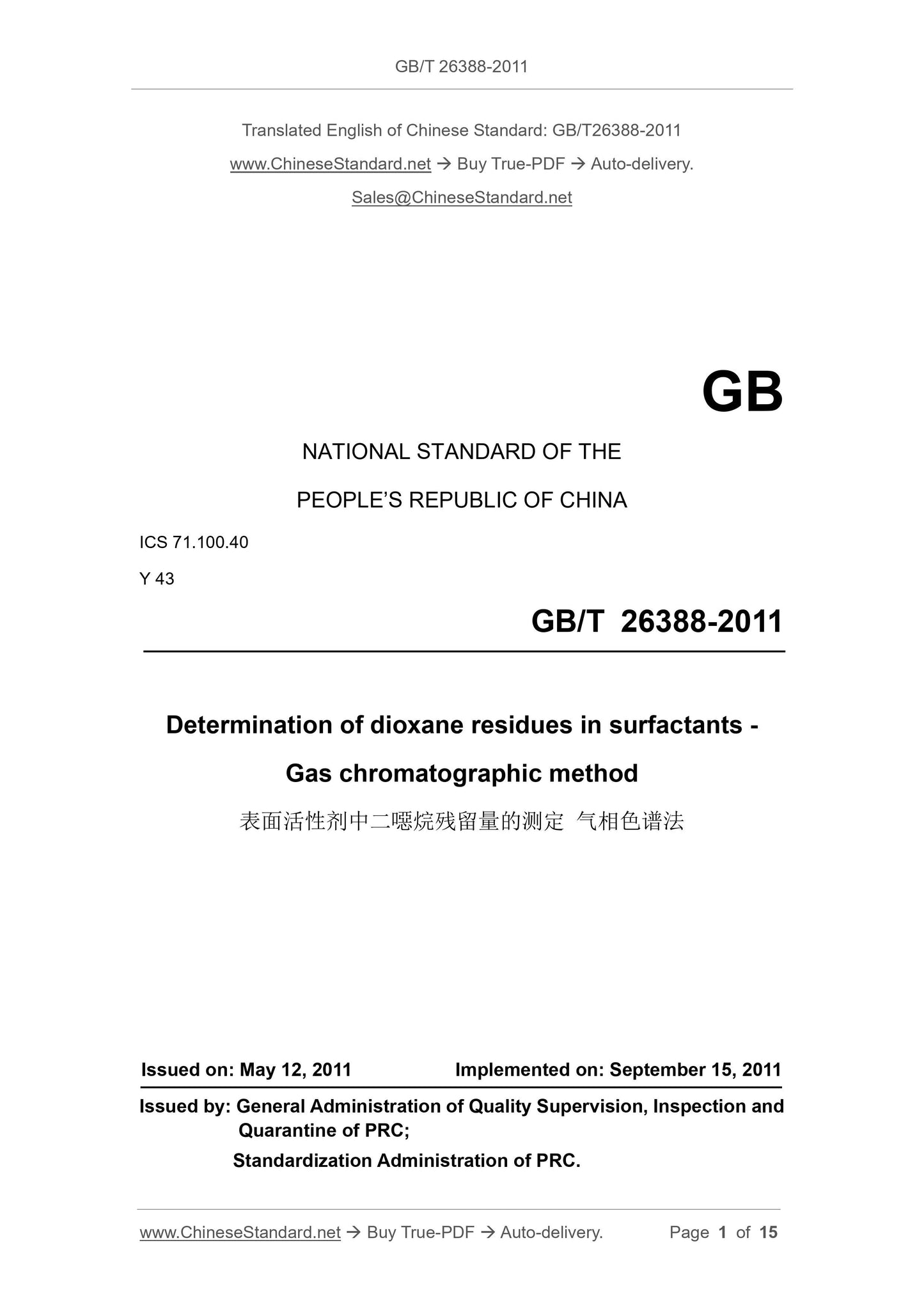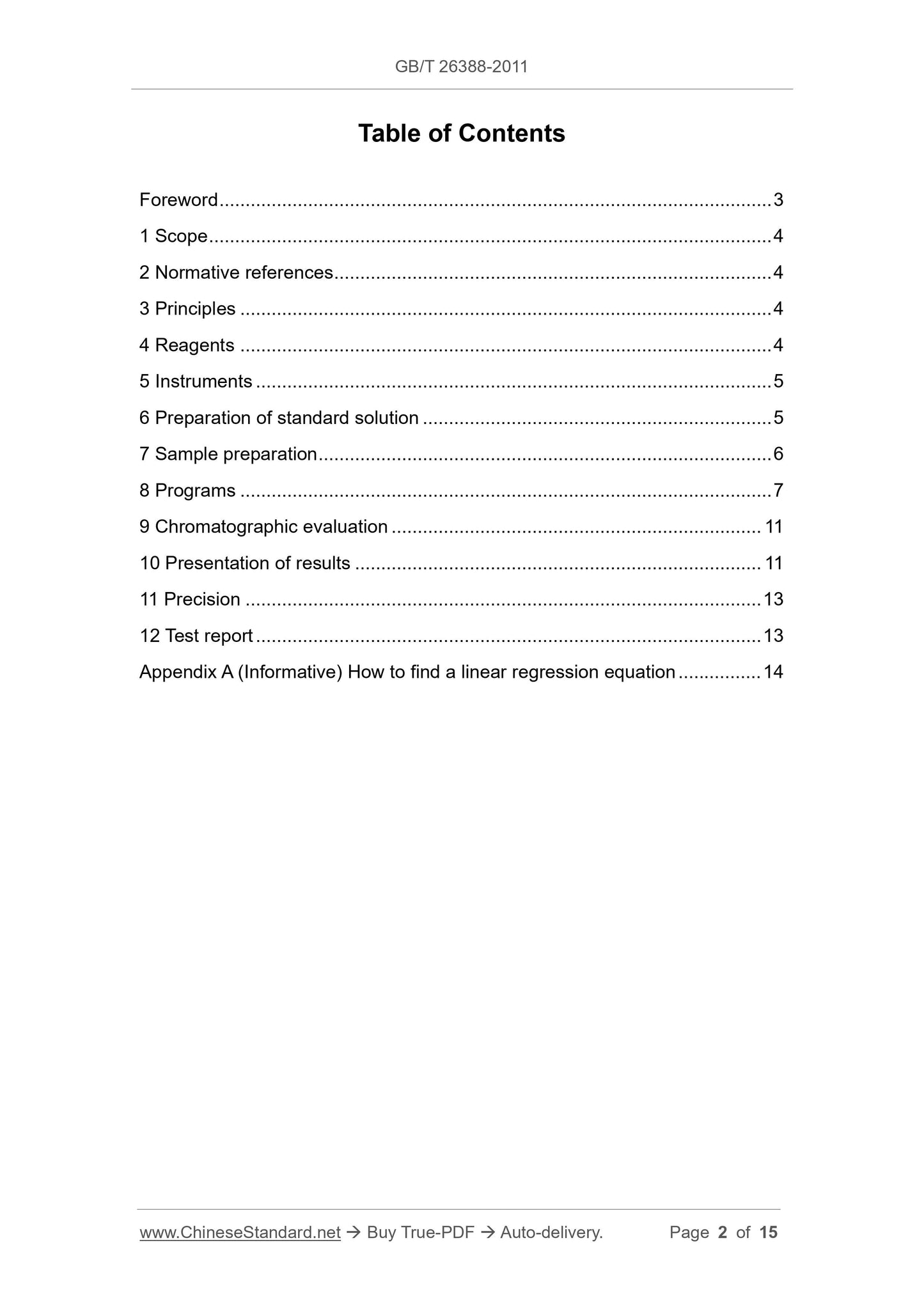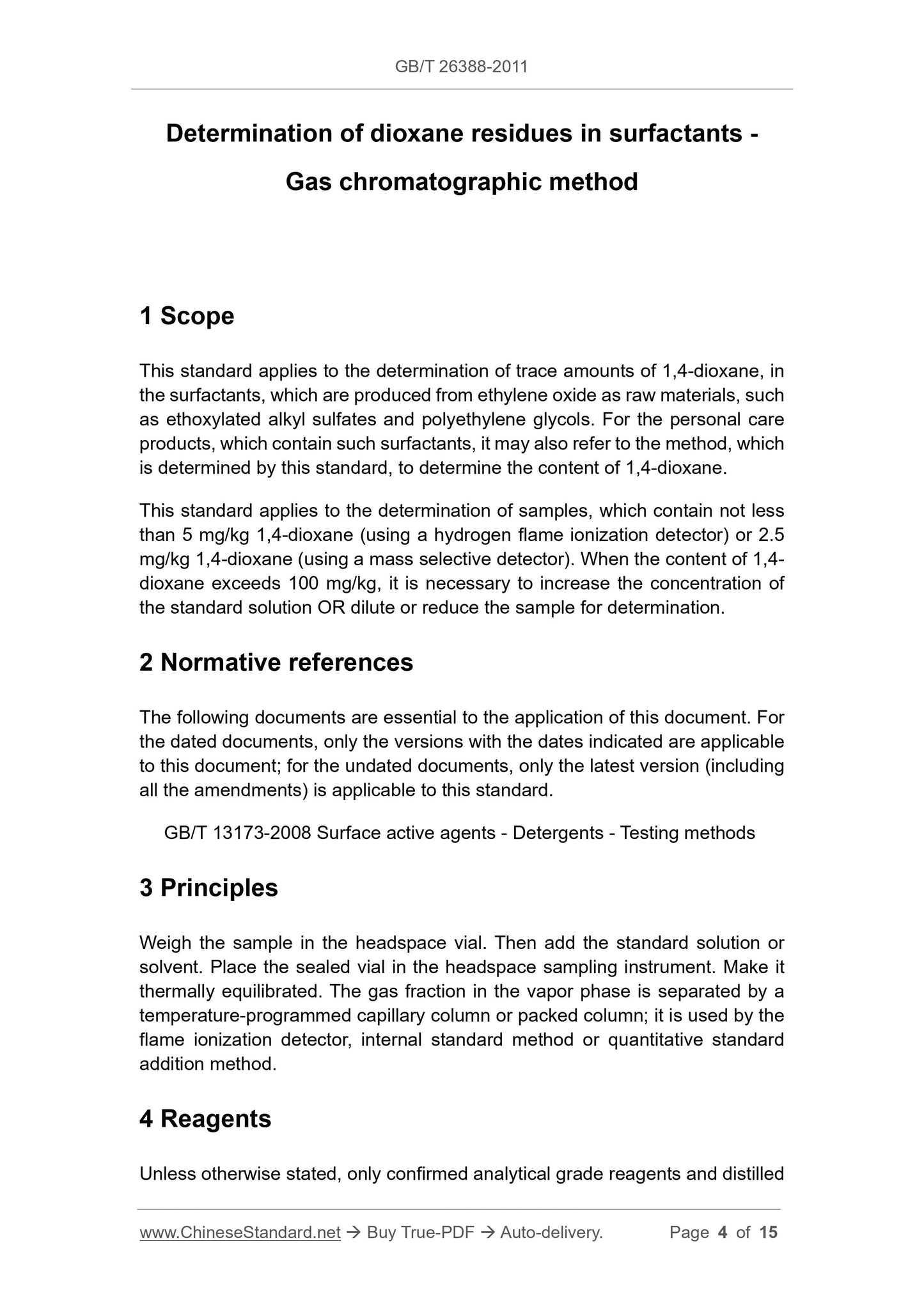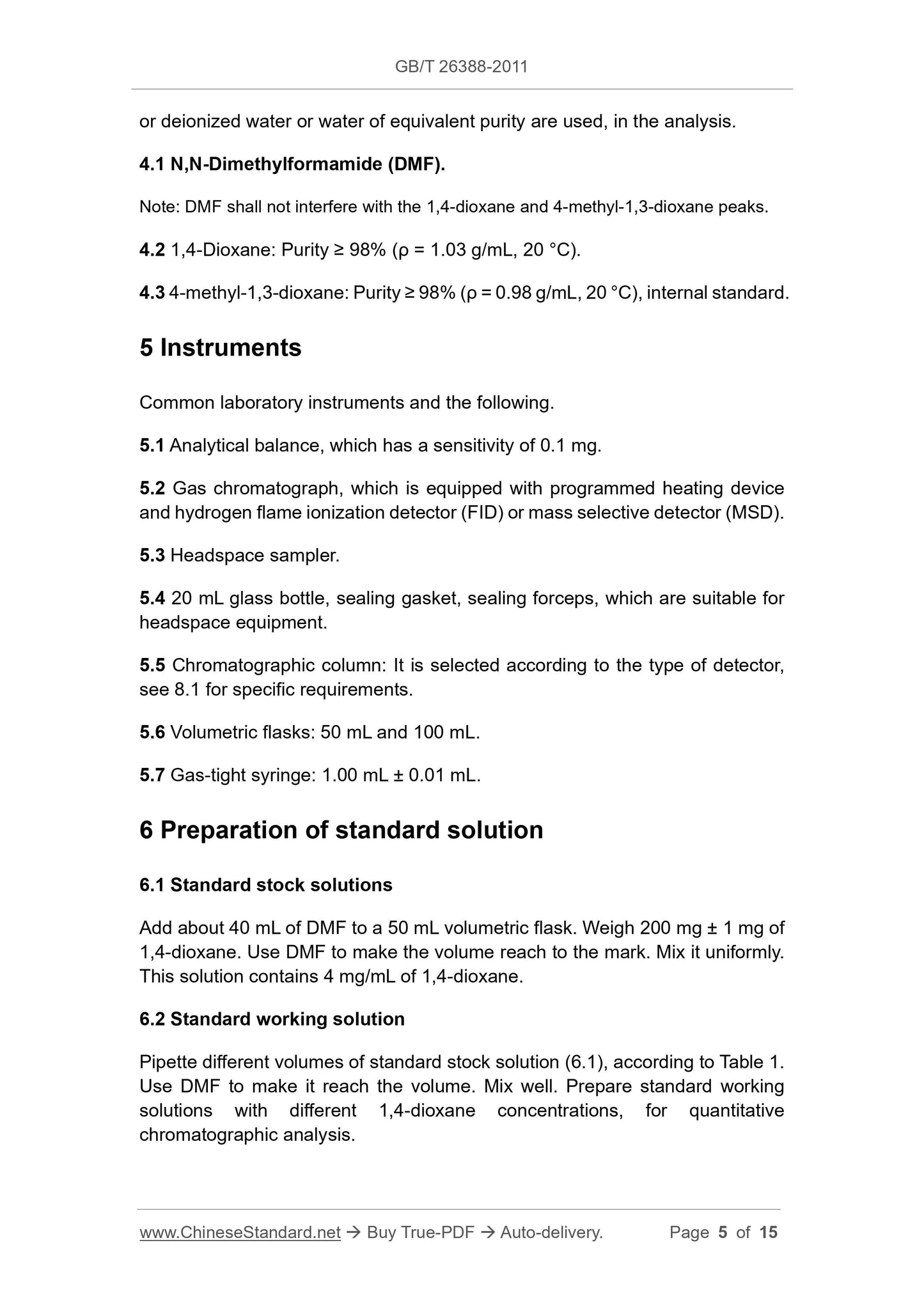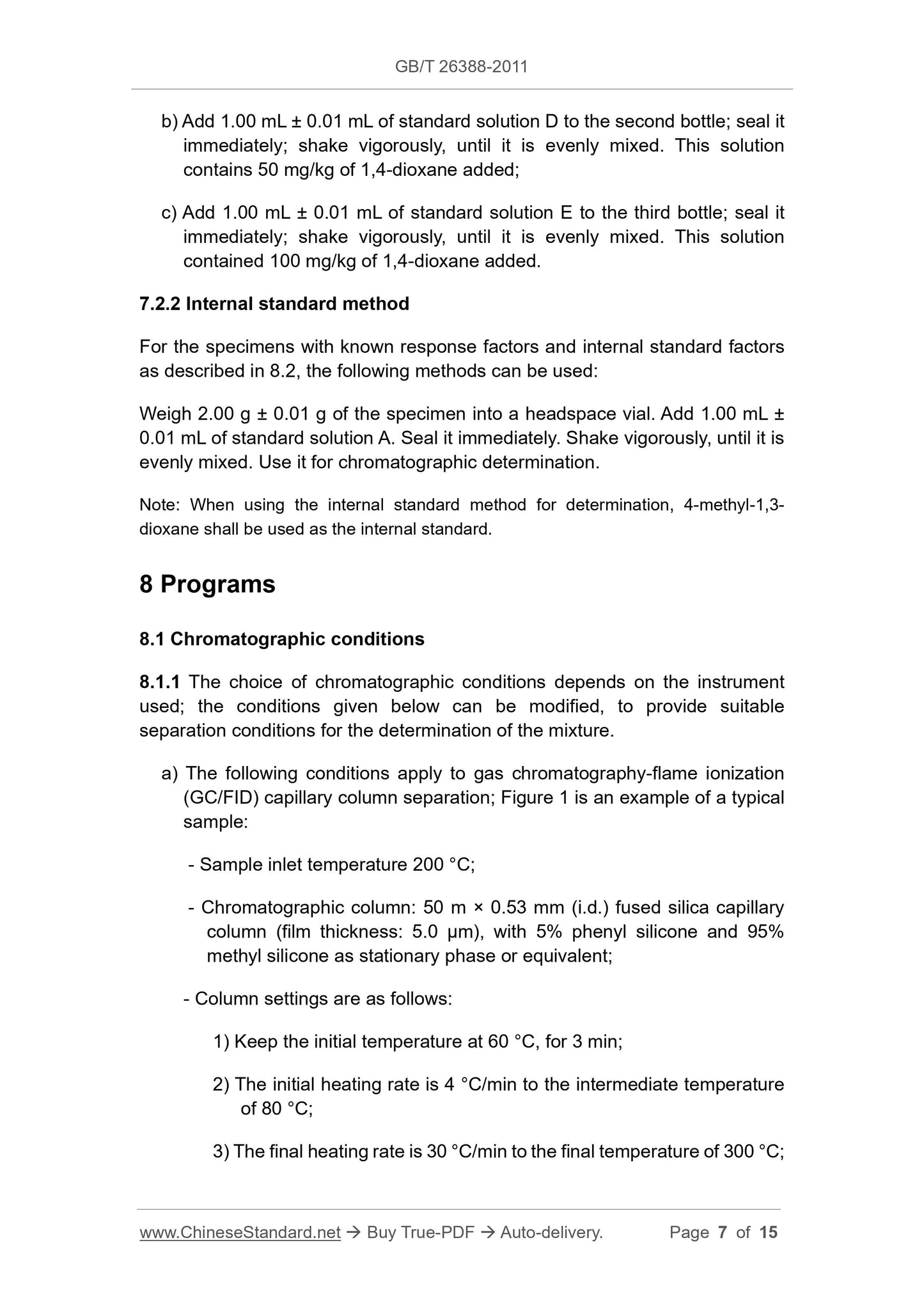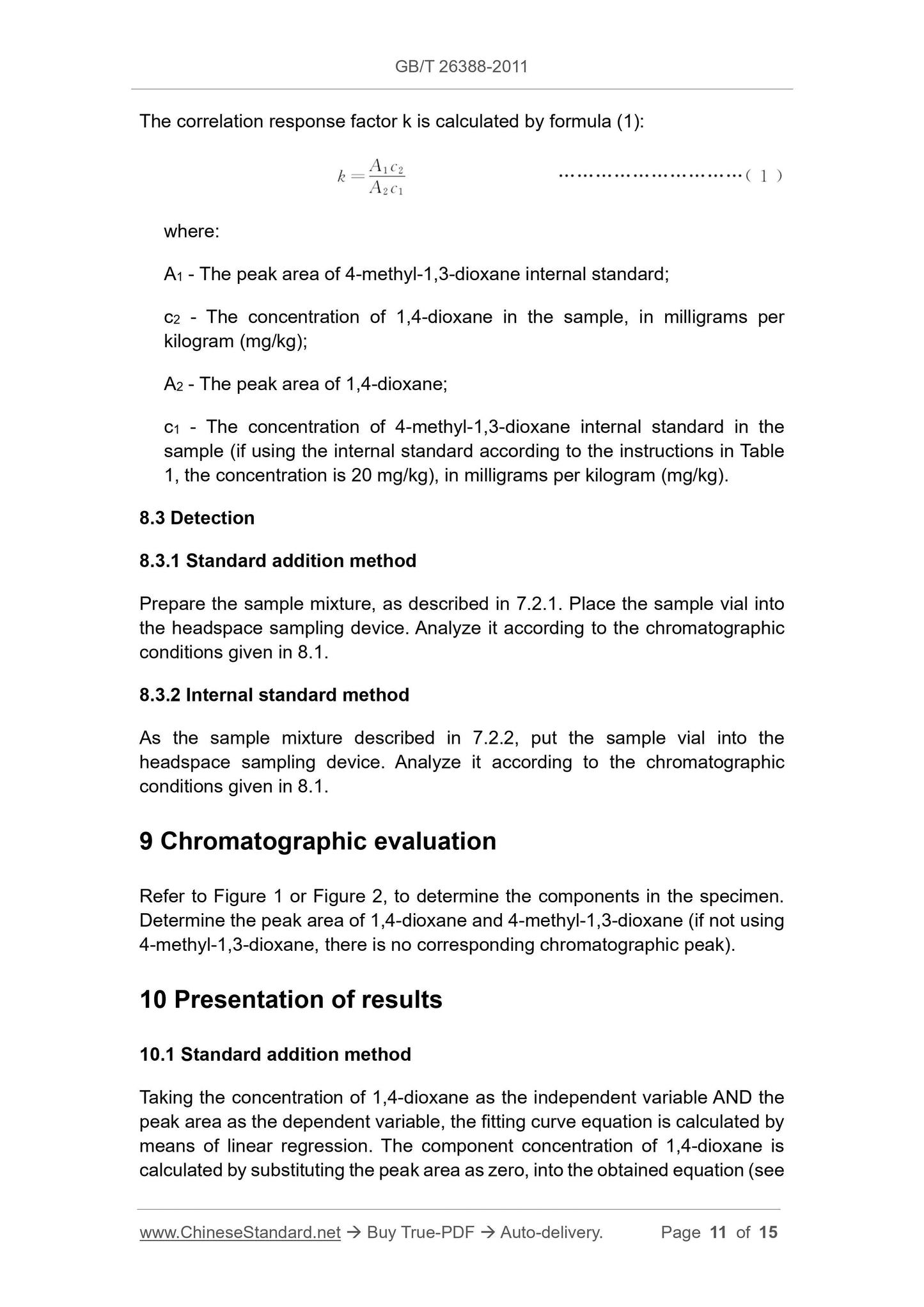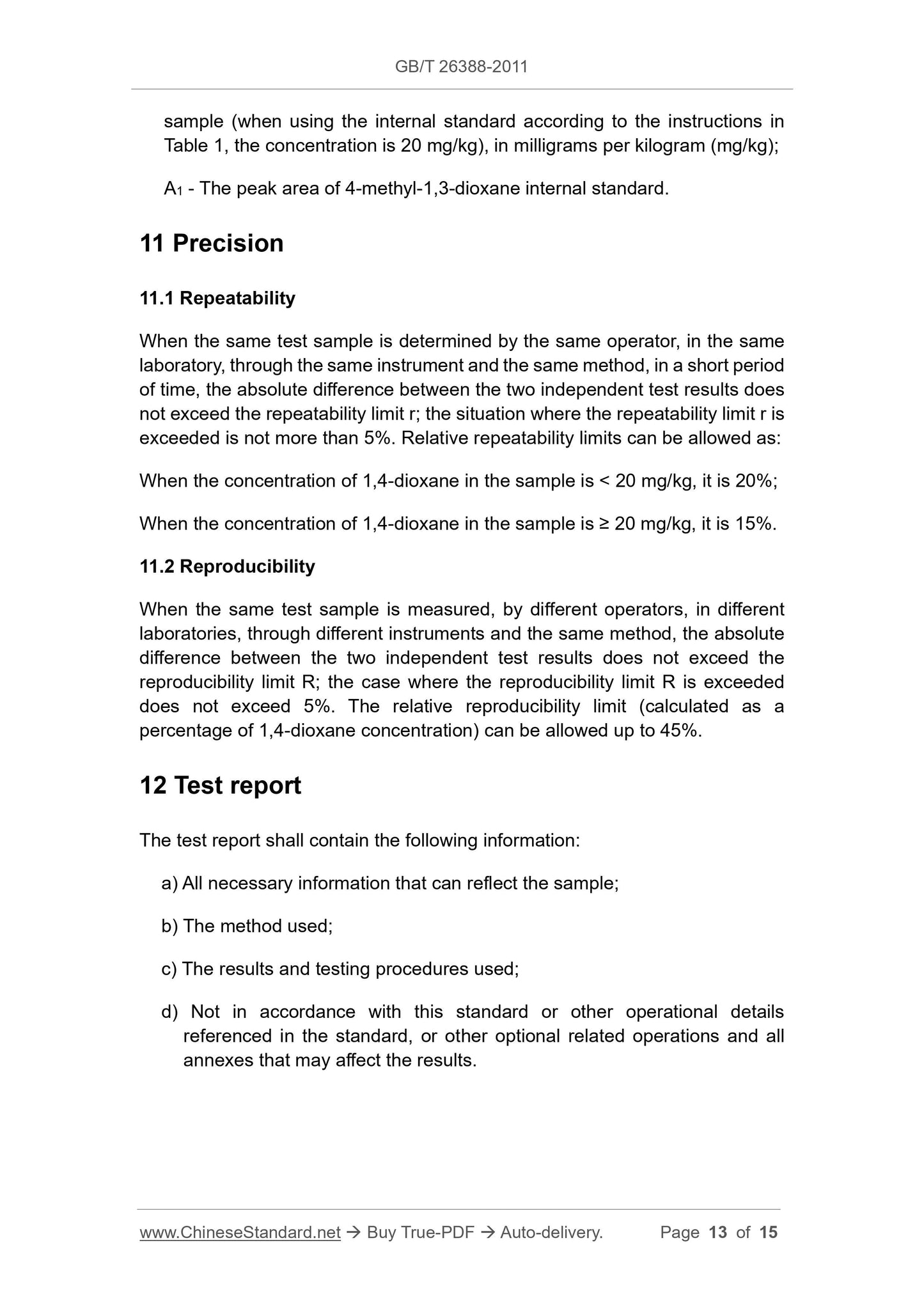1
/
of
7
www.ChineseStandard.us -- Field Test Asia Pte. Ltd.
GB/T 26388-2011 English PDF (GB/T26388-2011)
GB/T 26388-2011 English PDF (GB/T26388-2011)
Regular price
$250.00
Regular price
Sale price
$250.00
Unit price
/
per
Shipping calculated at checkout.
Couldn't load pickup availability
GB/T 26388-2011: Determination of dioxane residues in surfactants -- Gas chromatographic method
Delivery: 9 seconds. Download (and Email) true-PDF + Invoice.Get Quotation: Click GB/T 26388-2011 (Self-service in 1-minute)
Newer / historical versions: GB/T 26388-2011
Preview True-PDF
Scope
This standard applies to the determination of trace amounts of 1,4-dioxane, inthe surfactants, which are produced from ethylene oxide as raw materials, such
as ethoxylated alkyl sulfates and polyethylene glycols. For the personal care
products, which contain such surfactants, it may also refer to the method, which
is determined by this standard, to determine the content of 1,4-dioxane.
This standard applies to the determination of samples, which contain not less
than 5 mg/kg 1,4-dioxane (using a hydrogen flame ionization detector) or 2.5
mg/kg 1,4-dioxane (using a mass selective detector). When the content of 1,4-
dioxane exceeds 100 mg/kg, it is necessary to increase the concentration of
the standard solution OR dilute or reduce the sample for determination.
Basic Data
| Standard ID | GB/T 26388-2011 (GB/T26388-2011) |
| Description (Translated English) | Determination of dioxane residues in surfactants -- Gas chromatographic method |
| Sector / Industry | National Standard (Recommended) |
| Classification of Chinese Standard | Y43 |
| Classification of International Standard | 71.100.40 |
| Word Count Estimation | 14,147 |
| Date of Issue | 2011-05-12 |
| Date of Implementation | 2011-09-15 |
| Quoted Standard | GB/T 13173-2008 |
| Adopted Standard | EN 12974-1999, MOD |
| Regulation (derived from) | Announcement of Newly Approved National Standards No. 6 of 2011 |
| Issuing agency(ies) | General Administration of Quality Supervision, Inspection and Quarantine of the People's Republic of China, Standardization Administration of the People's Republic of China |
| Summary | This standard applies to the production of ethylene oxide as raw material surfactants, such as ethoxylated alkyl sulfate, polyethylene glycol and other products of trace residues of 1, 4 Dioxane (1, 4 dioxane) determination. Such surfactant -containing personal care products may also refer to the use of this standard to determine the method for the determination contained 1, 4 Dioxane (1, 4 dioxane). This standard applies to the determination contains not less than 5mg/kg 1, 4 dioxane (using a flame ionization detector) or 2. 5mg/kg 1, 4 dioxane (using mass selective detector) of the sample, when 1, 4 dioxane content of more than 100mg/kg, the need to increase the concentration of the standard or sample dilution or reduction measured. |
Share
